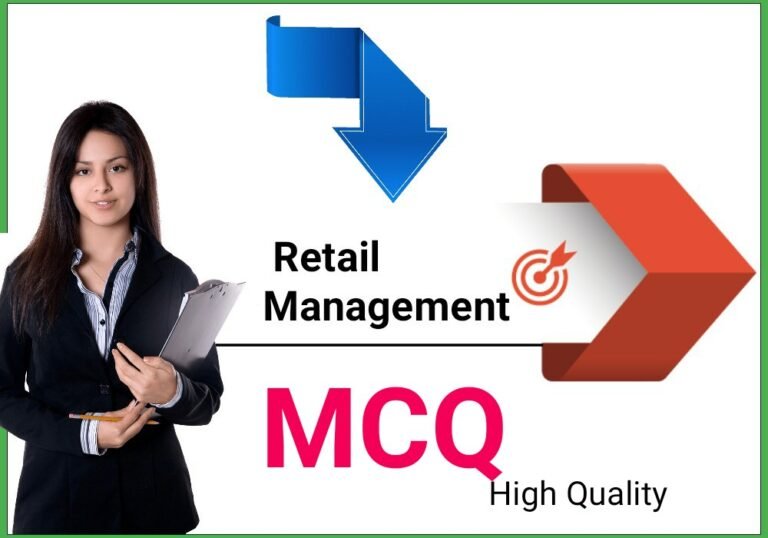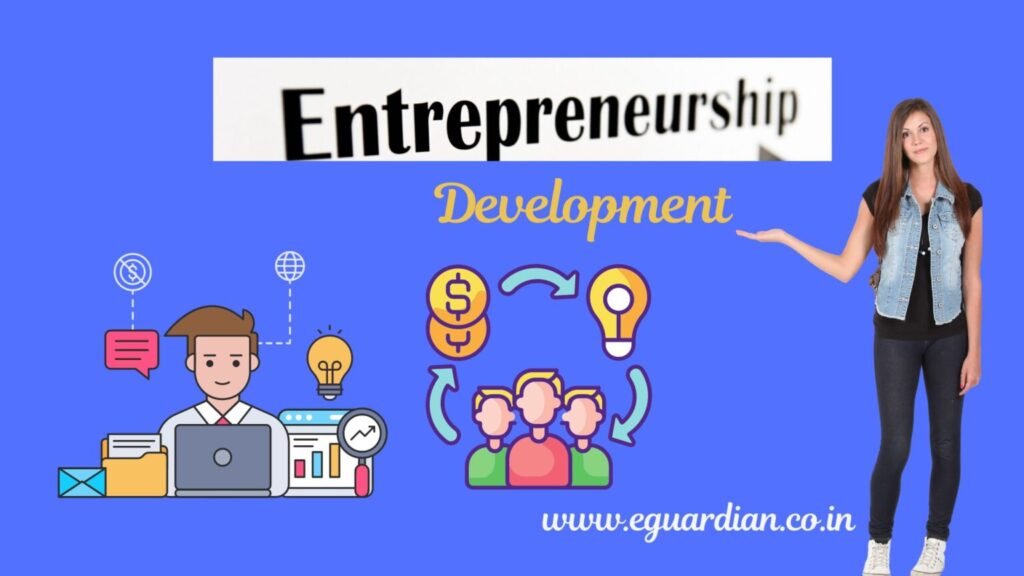Customer relationship management MCQs and answers pdf for the preparation of academic and competitive exams.

Customer relationship management MCQs
Q1. ___ is the overall efficiency with which a bank handles its customer accounts in terms of prompt statements, rates of interest offered, etc.
a. Functional quality.
b. Technical Quality.
c. Production quality.
d. None of the above.
Ans. B
Q2.___ is the way the service is actually delivered and includes personal courtesy, the service environment in terms of comfort and décor, and the customers own role.
a. Functional quality.
b. Technical Quality.
c. Production quality.
e. None of the above.
Ans. A
Q3. ___ are the efforts in which the firm is engaged, to set up its customer’s expectations and make promises to customers regarding what is to be delivered.
a. Internal marketing.
b. External marketing.
c. Both A & B
d. None of the above.
Ans. B
Q4. “Any act or performance that one party can offer to another that is essentially intangible & not result in the ownership of anything.” Which author has given this definition of service?
a. Payne
b. Kotler
c. Adrian
d. Andrew
Ans. B
Q5. The ___ are the objects, which are available to the customer’s knowledge and purchasing capacity within their limit.
a. Intangible goods.
b. Tangible goods.
c. Quality goods.
d. None of the above.
Ans. B
Q6. ___ hinges on the assumption that employee satisfaction and customer satisfaction are inextricably linked.
a. External marketing.
b. Internal marketing.
c. Macro marketing.
d. Target marketing.
Ans. B
Q7. ___ is an activity, which has some element of intangibility associated with it, which involves some interaction with customers or with property in their possession and does not result in a transfer of ownership.
a. Product.
b. Production.
c. Service.
d. Marketing.
Ans. C
Q8. ___ are created and consumed simultaneously and generally, they cannot be separated from the provider of the service.
a. Products.
b. Production.
c. Services.
d. None of the above.
Ans. C
Q9. Kotler referred to ___ Characteristic as variability.
a. Homogeneity.
b. Inseparability.
c. Intangibility.
d. Heterogeneity.
Ans. D
Q10. ___ are simply objects.
a. Services.
b. Goods.
c. Both A & B
d. None of the above.
Ans. B
Q11. ___ include medical specialists and legal advisors.
a. Specialty services.
b. Specialty products.
c. Primary services.
d. Secondary services.
Ans. A
Q12. ___ can be used to identify the key components of customer service and their relative importance and develop service segments.
a. Market segmentation.
b. Market strategy.
c. Market research.
d. None of the above.
Ans. C
Q13. ___ is based on conformance to specifications.
a. Internal quality.
b. External quality.
c. Service.
d. All of the above.
Ans. A
Q14. A model has been developed by ___ which helps to identify the gaps between the perceived service qualities that customers receive and what they expect.
a. Maslow.
b. Dale Yoder
c. Parasuraman.
d. None of the above.
Ans. C
Q15. ___ is the outcome dimension of the service operations process.
a. Functional quality.
b. Service quality.
c. Management quality.
d. Technical quality.
Ans. D
Q16. ___ is the physical facilities, equipment, and appearance of personnel.
a. Reliability.
b. Tangibles.
c. Intangibles.
d. Empathy.
Ans. B
Q17. ___ is defined as the ability to perform the promised service dependably and accurately.
a. Tangibility.
b. Assurance.
c. Empathy.
d. Reliability.
Ans. D
Q18. ___ is defined as the caring and individualized attention the firm provides to its customers.
a. Reliability.
b. Responsiveness.
c. Assurance.
d. Empathy.
Ans. D
Q19. ___ involves looking for the best ways to achieve competitive advantage.
a. Responsiveness.
b. Benchmarking.
c. Empathy.
d. None of the above.
Ans. B
Q20. ___ involves breaking down each of the activities of a firm into its various activities, and showing where value is added for its customers.
a. Storyboarding.
b. Value Chain analysis.
c. Blueprinting.
d. Perceived service.
Ans. B
Q21. Storyboarding concept was developed by ___.
a. Wilson.
b. Dale Yoder.
c. Williams.
d. Walk Disney.
Ans. D
Q22. The task of creating competitive advantage involves ___ rather than matching.
a. Performing.
b. Outperforming.
c. Blueprinting.
d. Printing
Ans. B
Q23. ___ is the process of aggregating customers with similar wants, needs, preferences, or buying behavior.
a. Market targeting.
b. Market segmentation.
c. Aggregation.
d. None of the above.
Ans. B
Q24. ___ includes a number of factors including sex, age, family size, etc.
a. Demographic variables.
b. Socio-economic variables.
c. Economical variables.
d. All of the above.
Ans. A
Q25. ___ is concerned with people’s behavior and ways of living.
a. Geographic segmentation.
b. Psychographic segmentation.
c. Economic segmentation.
d. Income segmentation.
Ans. B
Q26. ___ assumes that the benefits that people are seeking from a given product or service are the basic reasons why they buy a product.
a. Market segmentation.
b. Geographic segmentation.
c. Benefit Segmentation.
d. None of the above.
Ans. C
Q27. ___ considers how customers respond to a particular form of promotional activity.
a. Promotional response segmentation.
b. Market segmentation.
c. Target marketing.
d. Benefit segmentation.
Ans. A
Q28. ___ is concerned with the identification, development, and communication of a differentiated advantage, which makes the organization’s products and service perceived as superior and distinctive to those of its competitors in the mind of its target customers.
a. Differentiation.
b. Positioning.
c. Segmentation.
d. None of the above.
Ans. B
Q29. ___ is the positioning of a range or family of related products and services being offered by the organization.
a. Industry positioning.
b. Individual product or service positioning.
c. Organizational positioning.
d. Product sector positioning.
Ans. D
Q30. Consumers find that ___ can be more difficult and complex.
a. Positioning.
b. Differentiation of services.
c. Strategic marketing tool.
d. Brand positioning.
Ans. B
Q31. ___ represents the factors, which need to be considered when determining a service firm’s marketing strategy.
a. Marketing Strategy.
b. Marketing mix.
c. Product mix.
d. None of the above.
Ans. B
Q32. The framework given by Igor Ansoff about the service product decisions is called ___.
a. Product/Market Expansion Grid.
b. Packaging grid.
c. Product grid.
d. Segmentation grid.
Ans. A
Q33. ___ process involves the introduction of new products, which may or may not be related to the company’s present products into existing or new markets.
a. Penetration.
b. Centralization.
c. Diversification.
d. None of the above.
Ans. A
Q34. ___ includes all methods of setting prices with exclusive reference to cost.
a. Competition pricing.
b. Cost-plus pricing.
c. Parity pricing.
d. Rate of return pricing.
Ans. B
Q35. ___ is also referred to as target return pricing.
a. Competitive pricing.
b. Loss leading pricing.
c. Rate of return pricing.
d. Cost-plus pricing.
Ans. C
Q36. ___ is one of the main forms of impersonal communication used by service firms.
a. Public relationship.
b. Advertising.
c. Both A & B.
d. None of the above.
Ans. B
Q37. ___ is philosophy of doing business, a strategic orientation that focuses on keeping and improving current customers rather than on acquiring new customers.
a. Service marketing.
b. Product marketing.
c. Production marketing.
d. Relationship marketing.
Ans. D
Q38. The purpose of considering ___ is to discover if the more effective marketing strategy is available before the plan is implemented.
a. Marketing programme.
b. Alternative mixes.
c. Marketing mix.
d. Product mix.
Ans. B
Q39. The marketing plan is implemented, performance criteria for.
a. Marketing planning.
b. Information systems.
c. Measuring performance of marketing efforts.
d. None of the above.
Ans. C
Q40. ___ refers to the blend of ideas, concepts and features which marketing management put together to bets appeal to their target market.
a. Marketing Mix.
b. Product mix.
c. Both A & B.
d. None of the above.
Ans. A
Retail Management MCQ Questions and Answers pdf
Thanks for reading if you like the post on Customer relationship management multiple choice questions and answers pdf. You may download the pdf file from here. Please share the post on social media with your friends.



